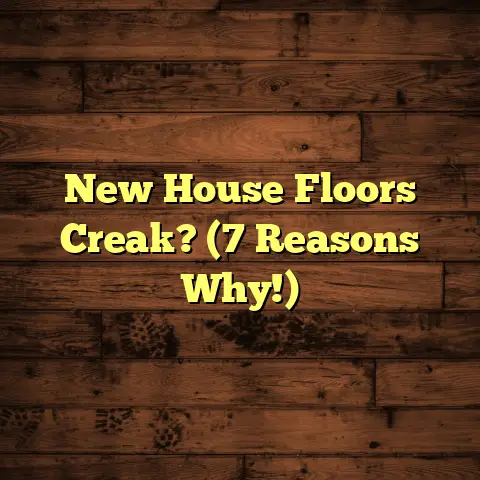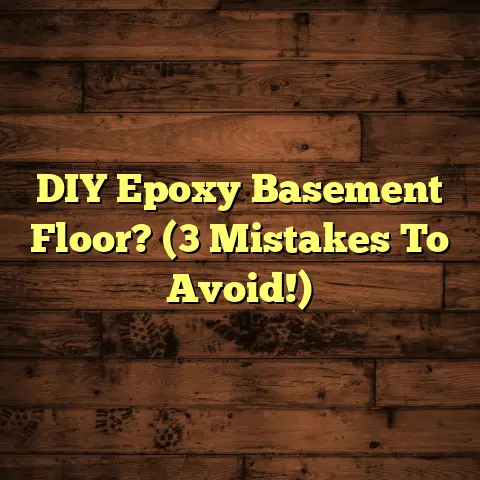Wood Stove Floor Pads: Buyer’s Guide (2 Pad Pitfalls!)
Introduction
Let’s face it, there’s something undeniably cozy about a wood stove crackling away on a chilly evening. It’s not just about the warmth, it’s about the feeling, right? And these days, with everyone thinking more about the environment, wood stoves are making a comeback as a way to heat our homes using renewable resources. They’re a fantastic eco-friendly option! We’re talking less reliance on those fossil fuels and a more sustainable way to keep toasty.
But here’s the thing: all that awesome heat needs to be managed. Think about it – embers popping, potential spills, and the sheer radiant heat can wreak havoc on your beautiful floors. That’s where wood stove floor pads come in. They’re not just an accessory; they’re a necessity for safety and peace of mind.
In this article, I’m going to walk you through everything you need to know about choosing the right wood stove floor pad. I’ll break down the materials, the features to look for, and even where to find the best deals. But more importantly, I’m going to highlight two HUGE pitfalls I’ve seen homeowners fall into time and time again. Trust me, avoiding these mistakes can save you a ton of money and a whole lot of heartache. So, grab a cup of coffee (or hot cocoa if you’re already feeling that wood stove vibe!) and let’s dive in!
Section 1: Understanding Wood Stove Floor Pads
Alright, let’s get down to the nitty-gritty. What exactly are wood stove floor pads, and why are they so important?
1.1 Definition and Purpose
Simply put, a wood stove floor pad is a non-combustible barrier that sits beneath your wood stove. Its primary job is to protect your flooring from the intense heat, stray embers, and potential ash spills that can come with wood stove use. Think of it as a shield for your precious hardwoods, tiles, or carpets.
Without a proper floor pad, you’re essentially playing roulette with your floors. I’ve seen everything from scorched carpets to cracked tiles and even, in extreme cases, the beginnings of a fire. Not fun! A good pad provides thermal protection and a physical barrier.
1.2 Materials Used
Now, let’s talk materials. Floor pads aren’t just one-size-fits-all. They come in a variety of materials, each with its own pros and cons. Here’s a rundown:
-
Metal (Steel or Aluminum): These are durable and offer excellent heat resistance. They’re often used as a base layer in more complex pad designs.
- Pros: High heat resistance, long-lasting, relatively inexpensive.
- Cons: Can be plain-looking, may rust if not properly treated, can conduct heat outwards if not insulated.
-
Stone (Slate, Granite, or Tile): Stone pads offer a beautiful, natural look and excellent heat absorption.
- Pros: Aesthetically pleasing, durable, good heat retention.
- Cons: Can be heavy and difficult to move, more expensive than other options, can crack under extreme temperature changes.
-
Ceramic Tiles: A popular choice due to their versatility in design and decent heat resistance.
- Pros: Wide variety of styles and colors, relatively affordable, easy to clean.
- Cons: Can crack under extreme heat, grout can be difficult to clean, not as heat-resistant as stone or metal.
-
Heat-Resistant Composites: These are often a blend of materials designed for optimal heat protection and durability. Think of things like cement board with a decorative finish.
- Pros: Engineered for high heat resistance, can be lightweight, often come in various styles.
- Cons: Quality can vary depending on the manufacturer, may be more expensive than basic options.
Here’s a quick table summarizing the materials:
| Material | Pros | Cons |
|---|---|---|
| Metal (Steel/Aluminum) | High heat resistance, durable, inexpensive | Plain look, potential for rust, can conduct heat |
| Stone (Slate/Granite/Tile) | Aesthetically pleasing, durable, good heat retention | Heavy, expensive, can crack under extreme temperature changes |
| Ceramic Tiles | Wide variety of styles, affordable, easy to clean | Can crack, grout cleaning, not as heat-resistant as stone/metal |
| Heat-Resistant Composites | Engineered for high heat resistance, lightweight, various styles | Quality varies, may be more expensive |
1.3 Regulatory Standards
Okay, this is where things get serious. You can’t just slap any old thing under your wood stove and call it a day. There are safety standards and regulations you need to be aware of.
- Local Fire Codes: These vary by location, so it’s crucial to check with your local fire department or building inspector. They’ll be able to tell you the specific requirements for wood stove installations in your area, including floor pad specifications.
- UL (Underwriters Laboratories) Listing: Look for floor pads that are UL-listed. This means they’ve been tested and certified to meet certain safety standards.
- NFPA (National Fire Protection Association) Standards: While not a direct certification, understanding NFPA standards, especially NFPA 211 (Standard for Chimneys, Fireplaces, Vents, and Solid Fuel-Burning Appliances), can give you valuable insights into safe installation practices.
Important Note: Don’t just take the manufacturer’s word for it. Do your own research and confirm that the pad meets all applicable regulations in your area. It’s better to be safe than sorry!
Section 2: Key Features to Look for in Wood Stove Floor Pads
So, you know why you need a floor pad and what materials are available. Now, let’s talk about the specific features that will make or break a good floor pad.
2.1 Heat Resistance
This is, without a doubt, the MOST important factor. The whole point of a floor pad is to protect your floors from heat, so you need to make sure it can handle the heat your stove puts out.
- R-Value: This measures a material’s resistance to heat flow. The higher the R-value, the better the insulation. Look for pads with a sufficient R-value for your specific stove model. Your stove’s manual should specify the required R-value for floor protection.
- Maximum Temperature Rating: This is the highest temperature the pad can withstand without being damaged. Make sure the pad’s rating exceeds the maximum surface temperature of your stove.
Pro Tip: Don’t skimp on heat resistance! It’s better to over-protect than under-protect.
2.2 Size and Coverage
Size matters! You need a pad that’s large enough to provide adequate protection around your stove. Here’s how to figure out the right size:
- Stove Manufacturer Specifications: Your stove’s manual will specify the minimum size requirements for the floor pad. These requirements are based on the stove’s dimensions and its distance from combustible materials.
- Clearance Requirements: Generally, you’ll need the pad to extend at least 16 inches to the front of the stove and 8 inches to the sides and rear. However, always refer to your stove’s manual and local fire codes for specific requirements.
- Measuring Your Space: Use a measuring tape to determine the area where your stove will be placed. Add the required clearances to these measurements to determine the minimum size of the floor pad you’ll need.
Example: Let’s say your stove is 24 inches wide and 30 inches deep. If the clearance requirements are 16 inches in front and 8 inches on the sides and rear, you’d need a pad that’s at least 40 inches wide (24 + 8 + 8) and 46 inches deep (30 + 16).
2.3 Thickness and Weight
Thickness and weight contribute to the pad’s stability and its ability to absorb and dissipate heat.
- Thickness: A thicker pad generally offers better insulation and protection. Look for pads that are at least 1/2 inch thick, and preferably thicker if you have a high-output stove.
- Weight: A heavier pad is less likely to shift or move around, which is important for safety. It also tends to indicate a more durable construction.
Think of it this way: A flimsy, lightweight pad is like a thin blanket on a cold night – it’s not going to do much good.
2.4 Design and Aesthetics
Okay, let’s be honest, nobody wants an ugly floor pad ruining their carefully curated home decor. The good news is that you don’t have to sacrifice style for safety.
- Material Choices: As we discussed earlier, different materials offer different aesthetics. Stone and tile pads can add a touch of elegance, while metal pads offer a more industrial look. Composite pads often come in a variety of finishes to match your decor.
- Shape and Size: Pads come in various shapes and sizes to fit different stove models and room layouts. Consider the overall design of your space when choosing a shape.
- Custom Options: Some manufacturers offer custom-made pads that can be tailored to your specific needs and style preferences.
Don’t be afraid to get creative! A well-chosen floor pad can actually enhance the look of your wood stove area.
Section 3: The Buying Process
Alright, you’re armed with knowledge. Now, let’s talk about how to actually buy a wood stove floor pad.
3.1 Researching Options
Before you pull out your wallet, do your homework!
- Online Reviews: Read reviews from other homeowners who have purchased the pads you’re considering. Pay attention to comments about heat resistance, durability, and ease of installation.
- Expert Recommendations: Check out websites and forums dedicated to wood stoves and heating. Experts and experienced users often have valuable insights to share.
- Product Comparisons: Compare different models side-by-side, paying attention to their features, specifications, and prices.
- Manufacturer Websites: Visit the websites of reputable manufacturers to learn more about their products and technologies.
Here’s a tip: Don’t rely solely on the manufacturer’s claims. Look for independent reviews and certifications to verify the pad’s performance.
3.2 Pricing Considerations
Floor pads can range in price from a few hundred dollars to over a thousand, depending on the material, size, and features.
- Factors Influencing Pricing: Material costs, manufacturing complexity, brand reputation, and retailer markups all play a role in determining the price of a floor pad.
- Budget-Friendly Options: If you’re on a tight budget, consider metal or basic composite pads. These options offer good protection without breaking the bank.
- Sales and Discounts: Keep an eye out for sales and discounts, especially during the off-season (spring and summer).
Remember: Don’t sacrifice quality for price. A cheap pad that doesn’t provide adequate protection could end up costing you more in the long run.
3.3 Where to Buy
You have several options when it comes to buying a wood stove floor pad:
- Online Retailers: Websites like Amazon, eBay, and specialized online retailers offer a wide selection of pads at competitive prices.
- Brick-and-Mortar Stores: Home improvement stores like Home Depot and Lowe’s, as well as fireplace and stove shops, carry a variety of floor pads.
- Specialty Fireplace and Stove Shops: These stores often have knowledgeable staff who can help you choose the right pad for your specific needs.
Reputable Brands: Some well-known brands in the wood stove floor pad market include:
- American Hearth: Known for their durable and aesthetically pleasing stone and tile pads.
- HY-C: Offers a wide range of metal and composite pads at affordable prices.
- Pioneer Hearth: Specializes in custom-made pads that can be tailored to your specific needs.
My recommendation: If possible, visit a brick-and-mortar store to see the pads in person before you buy. This will give you a better sense of their quality and appearance.
Section 4: The Two Common Pitfalls When Buying Wood Stove Floor Pads
Okay, this is the part I’m really passionate about. I’ve seen these mistakes happen way too often, and I want to help you avoid them. These are the two biggest pitfalls I see homeowners fall into when buying wood stove floor pads:
4.1 Pitfall #1: Ignoring Heat Resistance Ratings
This is the BIGGEST mistake, hands down. People see a pad that looks nice and fits their budget, and they assume it will provide adequate protection. WRONG!
-
Consequences: Buying a pad with an insufficient heat resistance rating can lead to:
- Scorched Flooring: The heat from the stove can penetrate the pad and damage your flooring.
- Increased Fire Risk: If the pad isn’t properly insulated, it can transfer heat to combustible materials in your floor or walls, increasing the risk of a fire.
- Voided Warranty: Using an unapproved floor pad can void the warranty on your wood stove.
Real-World Example: I once had a client who installed a beautiful new hardwood floor. They bought a wood stove and a floor pad from a big box store, thinking they were all set. A few weeks later, they called me in a panic. The heat from the stove had completely scorched the hardwood floor underneath the pad! Turns out, the pad was only rated for a fraction of the stove’s surface temperature. They had to replace a large section of their brand new floor, costing them thousands of dollars.
The Lesson: ALWAYS verify the heat resistance rating of the floor pad and make sure it meets or exceeds the requirements of your wood stove. Don’t trust the salesperson – do your own research!
4.2 Pitfall #2: Overlooking Size Specifications
The second major mistake is not paying attention to the size requirements specified by the stove manufacturer and local fire codes.
-
Risks: Using a pad that’s too small can lead to:
- Insufficient Coverage: Embers can fall outside the pad and ignite nearby combustible materials.
- Increased Fire Hazard: Radiant heat from the stove can affect the surrounding floor and walls, even if they’re not directly exposed to embers.
- Violation of Fire Codes: You could be fined or forced to remove your wood stove if your installation doesn’t comply with local fire codes.
Anecdote: I remember another client who tried to save money by using a smaller floor pad than recommended. They figured, “It’s just a few inches, what’s the big deal?” Well, one day, a small ember popped out of the stove and landed on the carpet just outside the pad. Luckily, they caught it quickly, but it could have easily turned into a major fire.
Key Takeaway: Follow the size specifications to the letter! It’s not worth the risk to cut corners on this. Measure your space carefully and choose a pad that provides adequate coverage.
Section 5: Installation and Maintenance
You’ve got your floor pad. Now, let’s get it installed and keep it in tip-top shape.
5.1 Installation Tips
Installing a wood stove floor pad is usually a straightforward process, but here are a few tips to keep in mind:
- Read the Instructions: Always read and follow the manufacturer’s installation instructions.
- Prepare the Surface: Make sure the floor is clean, level, and free of debris before installing the pad.
- Use Proper Tools: You may need a level, measuring tape, and possibly some shims to ensure the pad is properly positioned and stable.
-
Avoid Common Mistakes:
- Not leveling the pad: An uneven pad can be unstable and may not provide adequate protection.
- Placing the pad too close to combustible materials: Make sure the pad is far enough away from walls and other flammable items.
- Using the wrong type of fasteners: If the pad requires fasteners, use the type recommended by the manufacturer.
If you’re not comfortable installing the pad yourself, hire a professional. It’s better to be safe than sorry.
5.2 Maintenance Guidelines
Proper maintenance will help extend the life of your floor pad and ensure its continued effectiveness.
- Regular Cleaning: Clean the pad regularly to remove ash, dirt, and debris. Use a broom, vacuum cleaner, or damp cloth, depending on the material.
-
Material-Specific Cleaning Methods:
- Metal: Use a mild soap and water solution. Avoid abrasive cleaners that can scratch the surface.
- Stone and Tile: Use a stone cleaner or a mild soap and water solution. Avoid acidic cleaners that can damage the stone.
- Ceramic: Use a tile cleaner or a mild soap and water solution. Pay attention to the grout lines, which can be difficult to clean.
- Composite: Follow the manufacturer’s cleaning instructions.
-
What to Avoid:
- Abrasive Cleaners: These can scratch and damage the surface of the pad.
- Harsh Chemicals: These can discolor or degrade the material.
- Excessive Moisture: Avoid soaking the pad with water, as this can damage the underlying flooring.
Inspect the pad regularly for any signs of damage, such as cracks, chips, or warping. If you notice any damage, replace the pad immediately.
Conclusion
Choosing the right wood stove floor pad is an essential step in ensuring the safety and efficiency of your wood stove. By understanding the materials, features, and regulations involved, you can make an informed decision that will protect your floors and your home.
Remember those two pitfalls: heat resistance and size specifications. Avoid those and you’re already ahead of the game!
And let’s not forget the bigger picture: wood stoves are a fantastic way to heat your home sustainably. By using renewable resources and reducing our reliance on fossil fuels, we can all do our part to protect the environment. A properly installed and maintained floor pad is a key component of a safe and sustainable wood stove setup.
So, go forth and choose wisely! Your floors (and your peace of mind) will thank you.
Call to Action
Now, I’d love to hear from you! Have you had any experiences with wood stove floor pads? Do you have any questions or additional tips to share? Let’s start a conversation in the comments below! Your insights could help other homeowners make the right choice for their homes. Let’s learn from each other and create a safer, more sustainable community!





